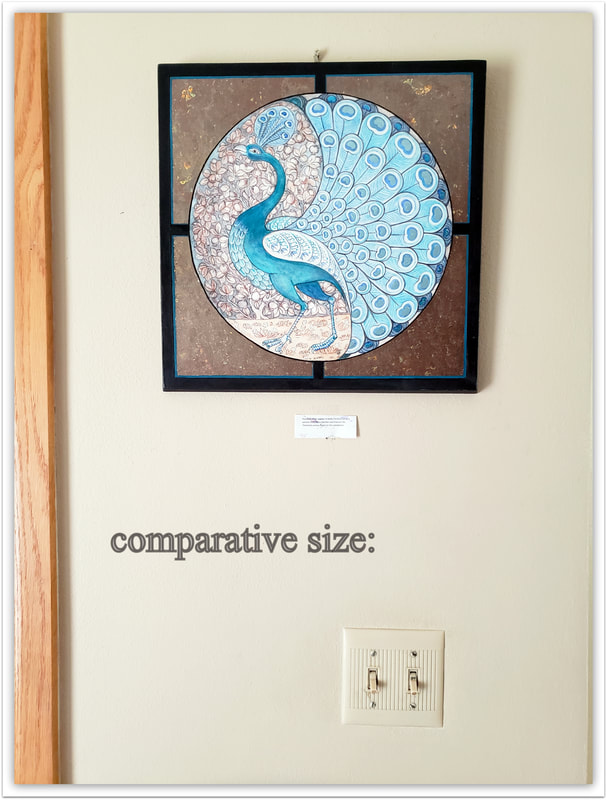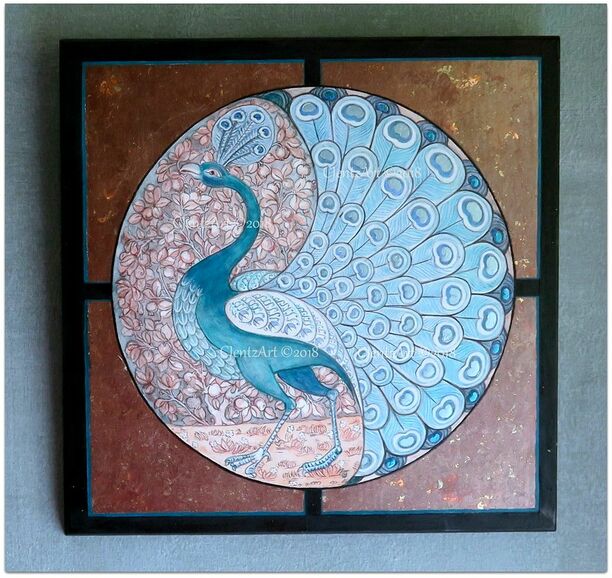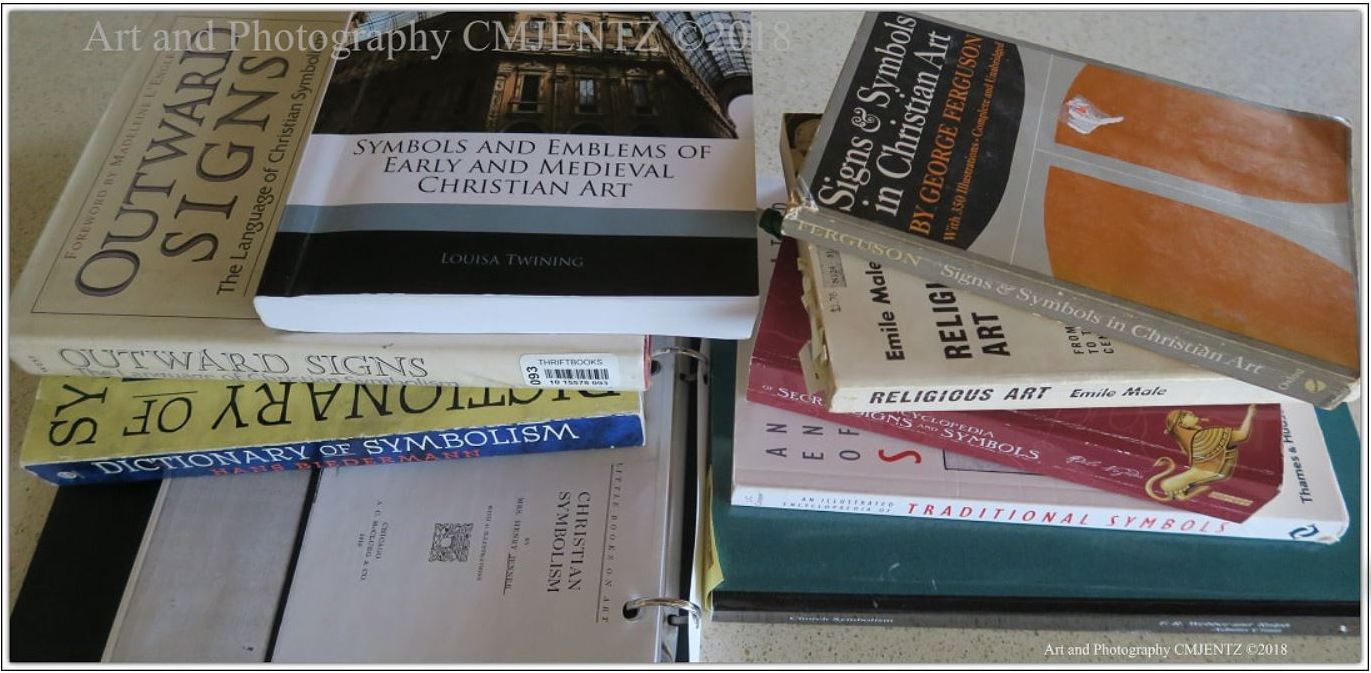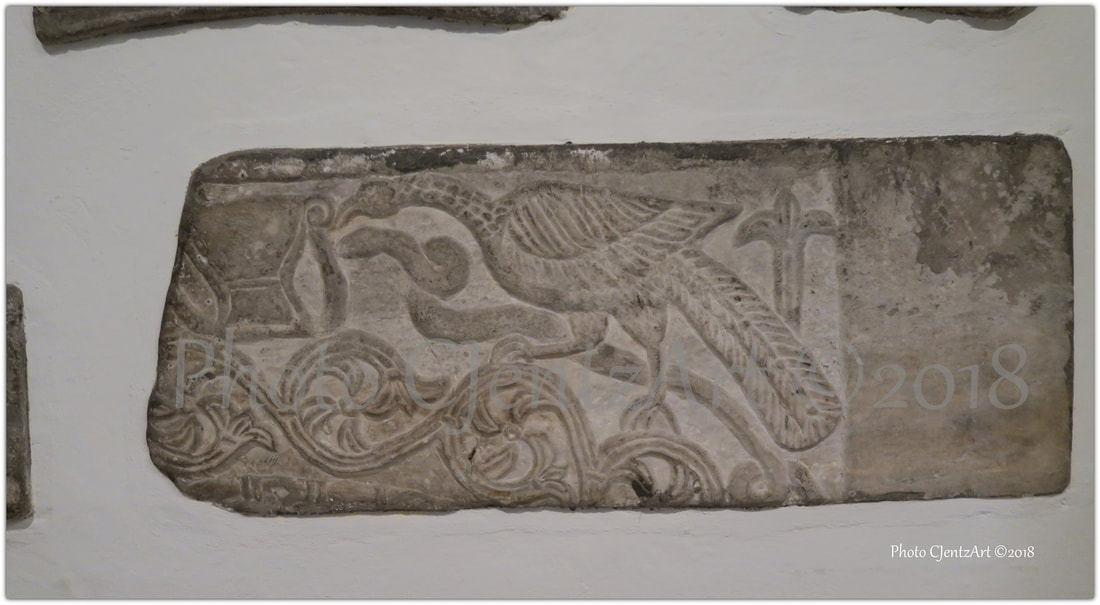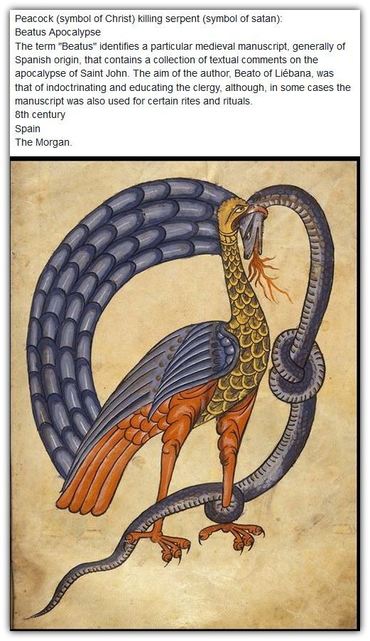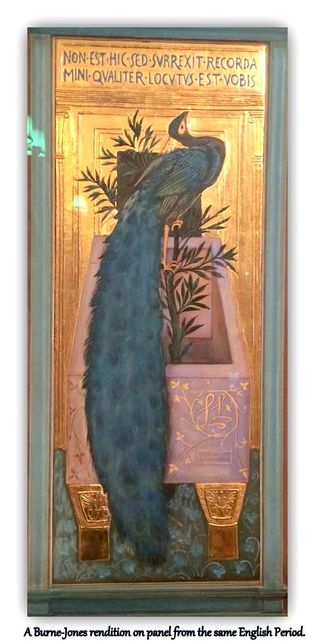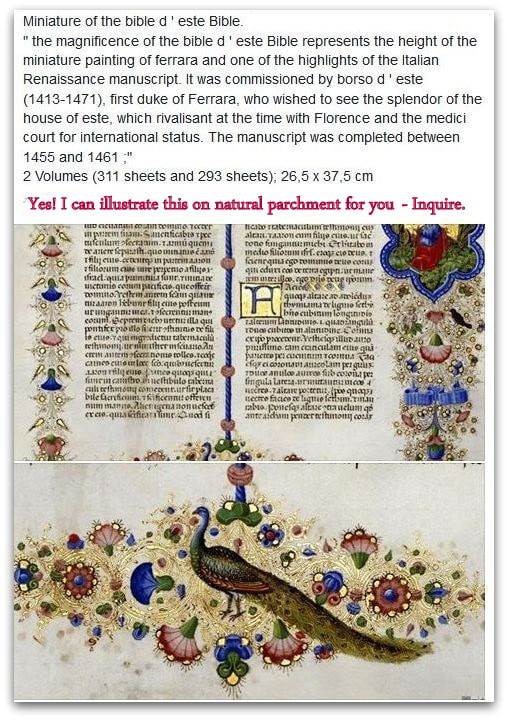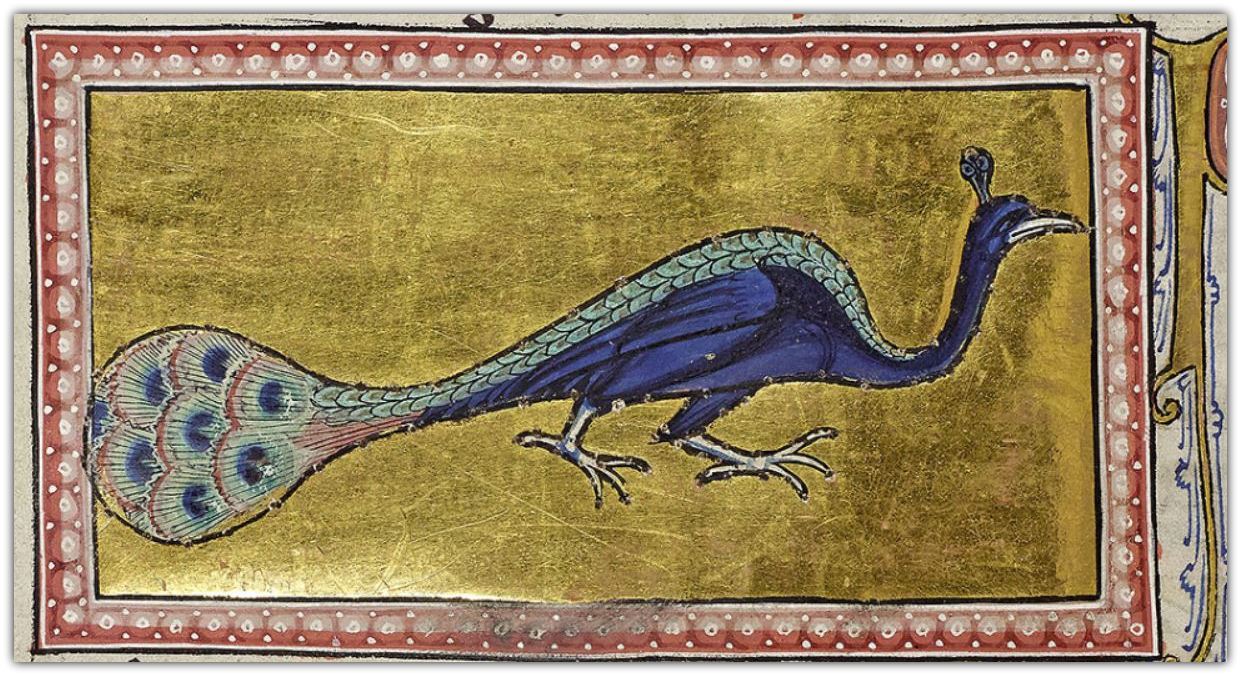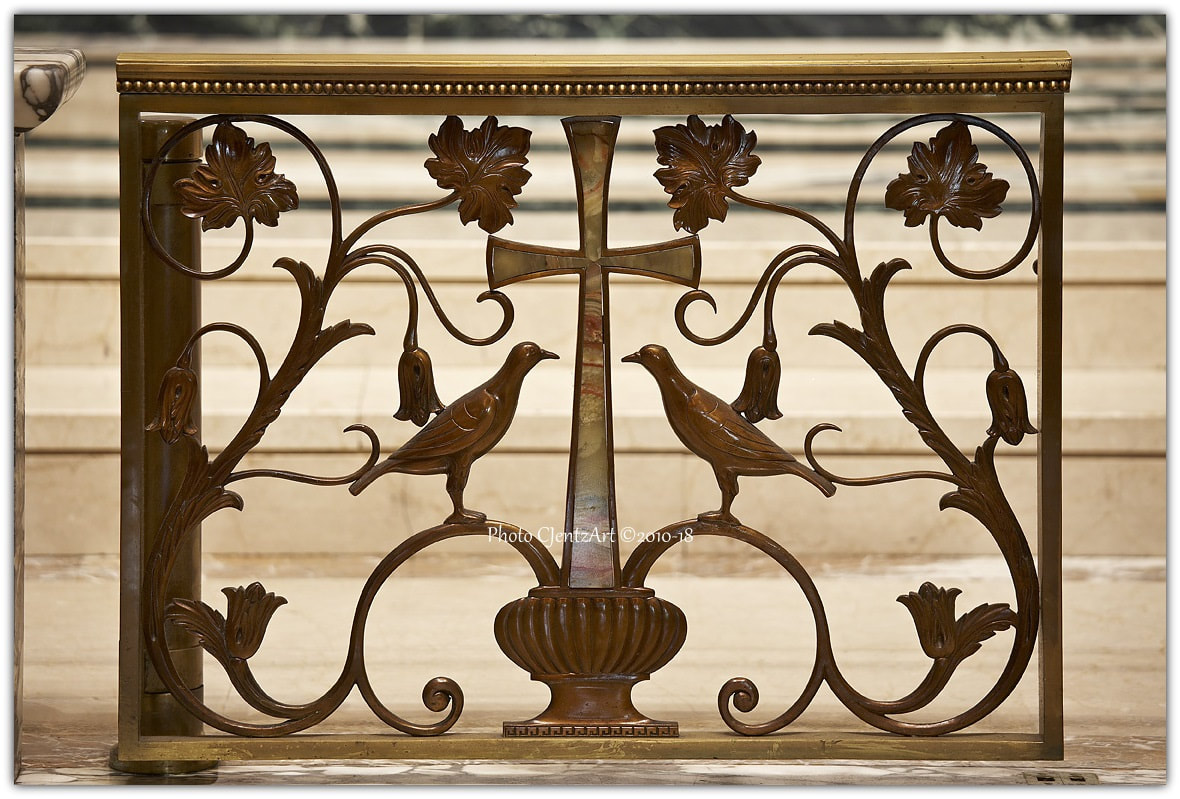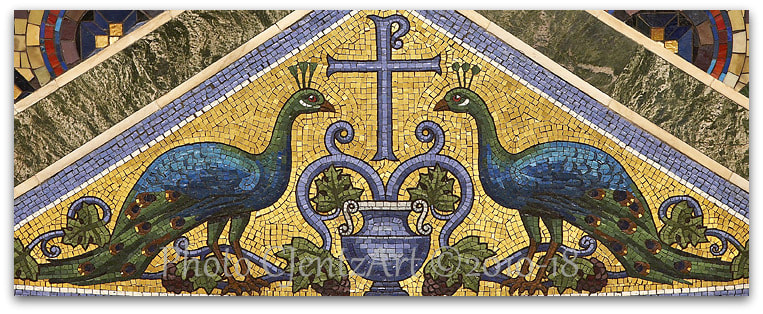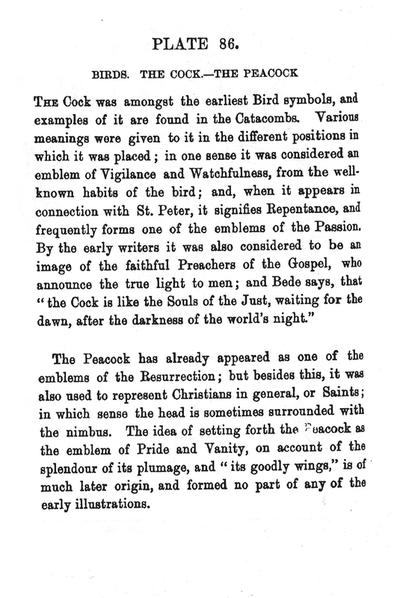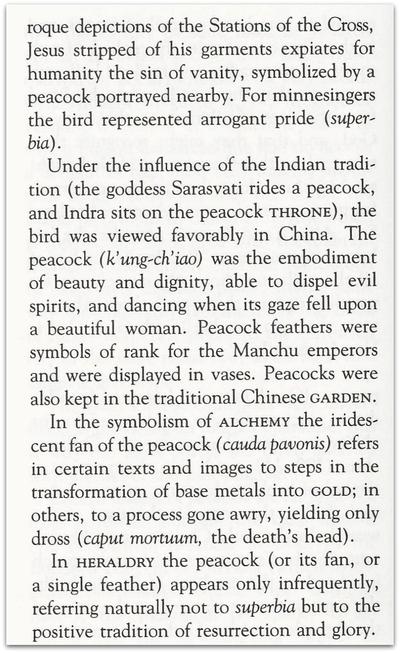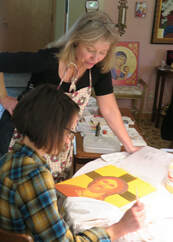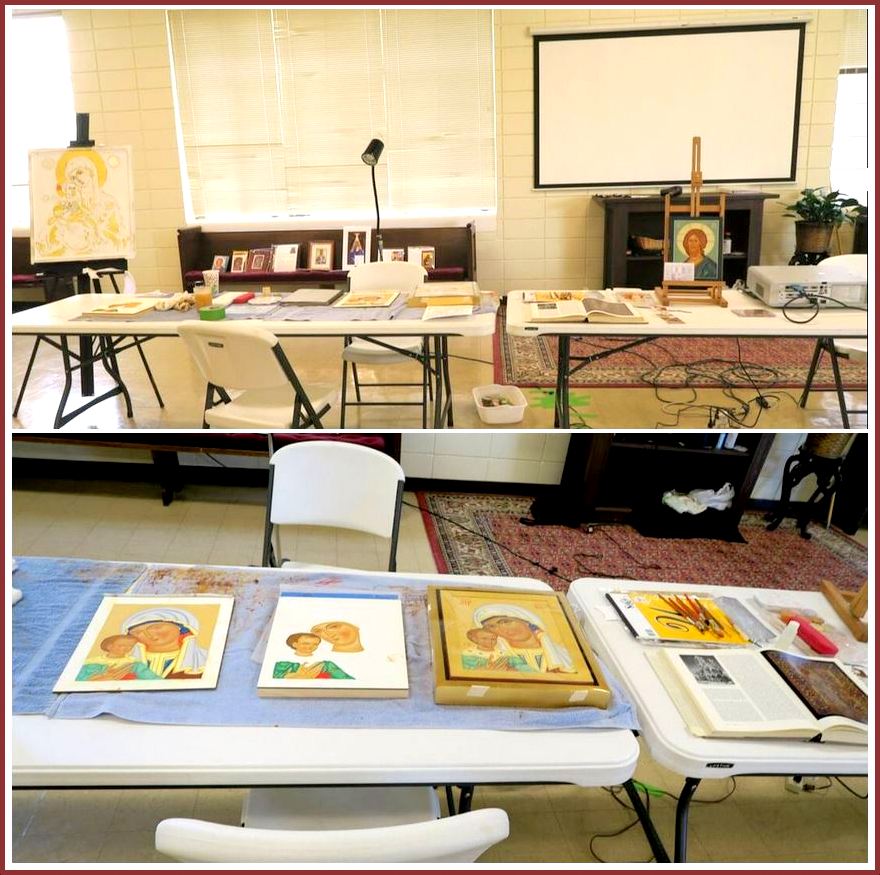|
The peacock with its exquisite plumage has fascinated artists, writers, and scientists since ancient times. The male bird's brilliant display of feathers is shed annually making way for an even finer arrangement of feathers. To paint, I've selected one cheery peacock illustration by William De Morgan, an English artist and manufacturer working in the 19th century. De Morgan's whimsical ceramic creations and illustrations were (and are) highly prized. This Peacock design was designed for a stylish charger (large plate) which is now located at the Birmingham Museum, U.K. (where I first admired it). Enjoyable are the intricate line works and color choices. There are numerous De Morgan peacocks, fish, other bestiaries, and florals patterns to be found. "Peacock in Turquoise" has been artfully updated on a custom made, 14", mitered, linen-lined, traditional gesso board and then painted in egg tempera with colorful metallic leafing creatively applied to the feathers and background. Within the scene is the "tree of life" with its pomegranate fruit; a symbol of the Resurrection.  Purchase: If you would like to purchase this painting it is $725.00 includes continental USA S&H TO Inquire. Canvas reproductions: 8x8 Signed Giclee in Canvas. Sides are tastefully wrapped for immediate hanging. Or purchase a "float frame" to house the canvas through online stores or local framing departments. Canvas art photos and two more paint selections: Above. My accumulated collection of books on symbolism. To gain the best possible perspective, it is great to have more than one immediate, tactical source on hand although online sleuthing is also popular. Each book offers a different perspective depending on the author's focus. To get a better idea, at the bottom of this blog are selected pages. Peacocks still appear in the usual iconographic Christian repertoire, but also in other ways it has developed as a decorative and symbolic form. An animal with such beautiful and colorful ornament causes people, even today, to extol it in song, dance, and story. Collections of symbolic and allegorical stories about animals, plants, and minerals originated somewhere from the East, perhaps in ancient Alexandria. For example, there is an old legend which states that the peacock flesh is incorruptible. Well, we know that's not true however symbolically it has become associated with Jesus Christ, the one who did not see corruption but was raised and glorified on the third day. So too does He raise up all true believers. There was not a decisive break with the pagan past in early Christian art, instead, many themes and motifs were adapted from their initial pagan context into the Christian worldview, presenting newly revealed (New Testament) connections and truths. The eyes of the peacock tail are interpreted as the “All-seeing eye" (Anapeson) or "All-seeing church". Three Book Pages:
Comments are closed.
|
"...whatever is true, whatever is honorable, whatever is right, whatever is pure, whatever is lovely, whatever is of good repute, if there is any excellence and if anything worthy of praise, dwell on these things." St Paul
A Post a Month
|
